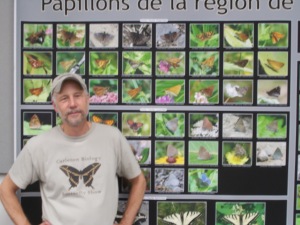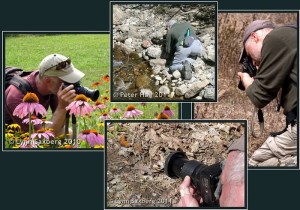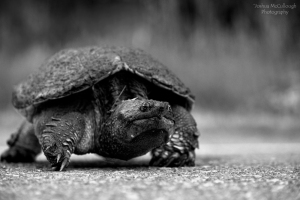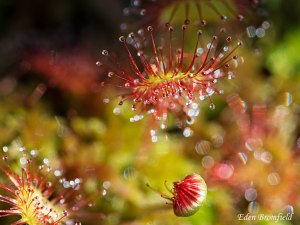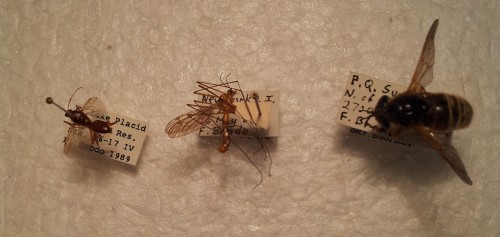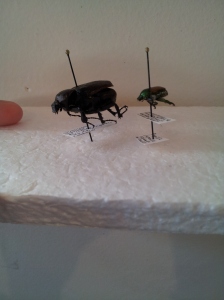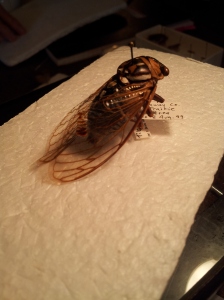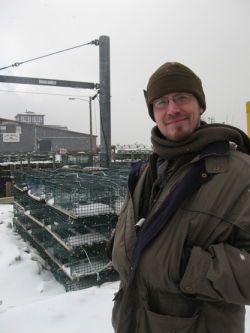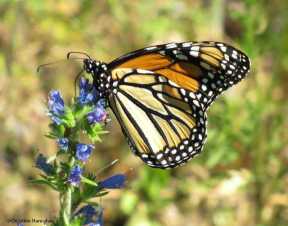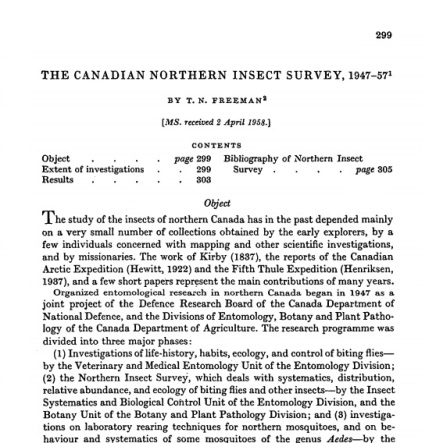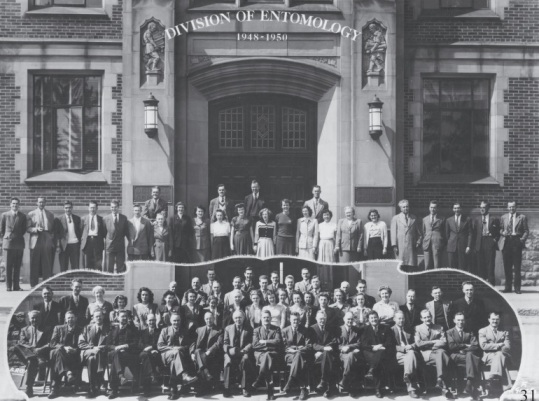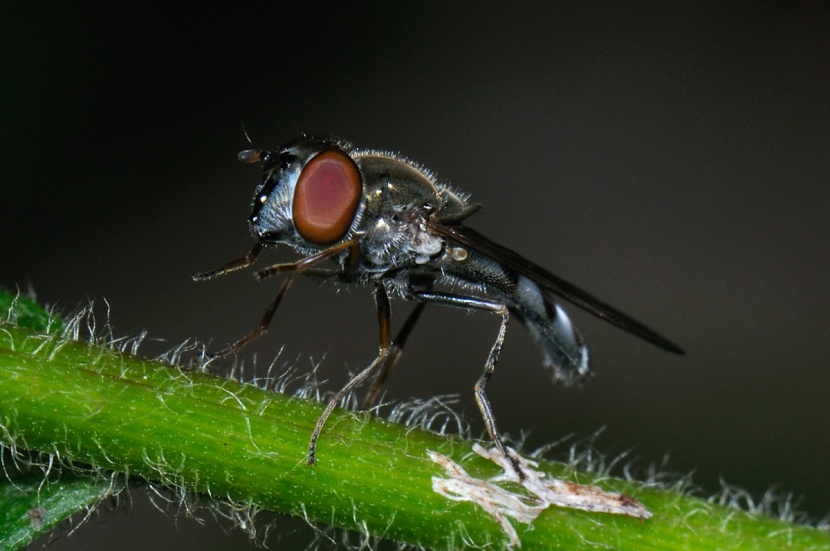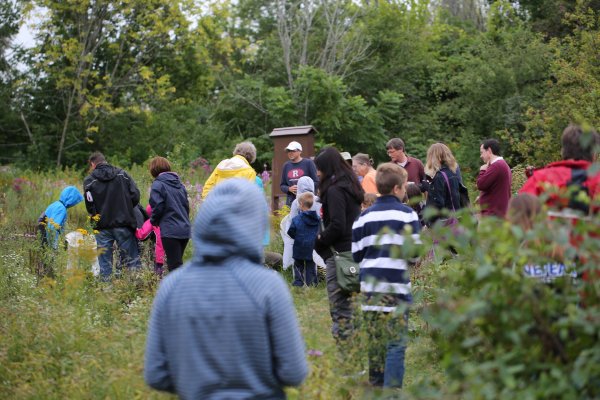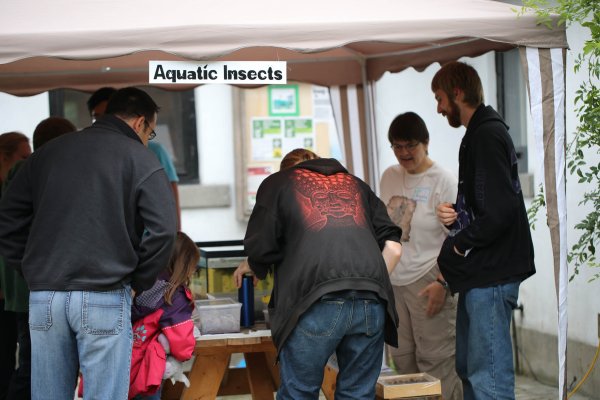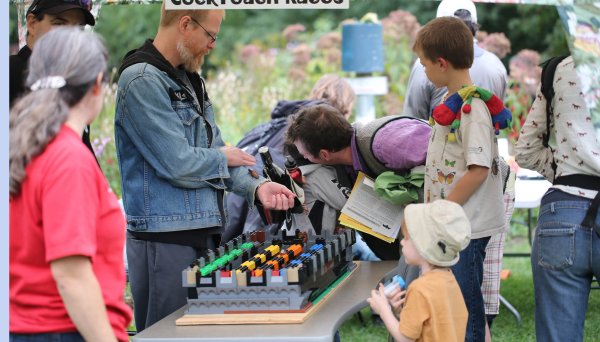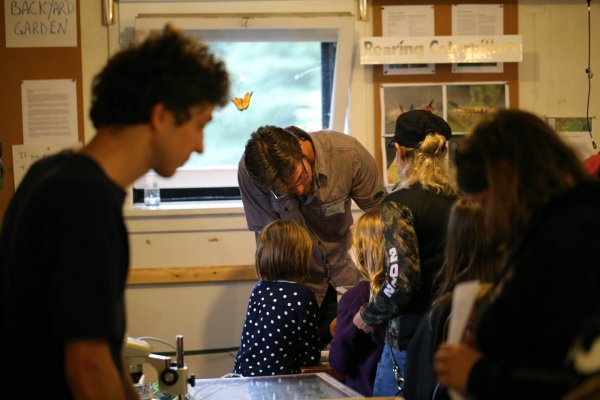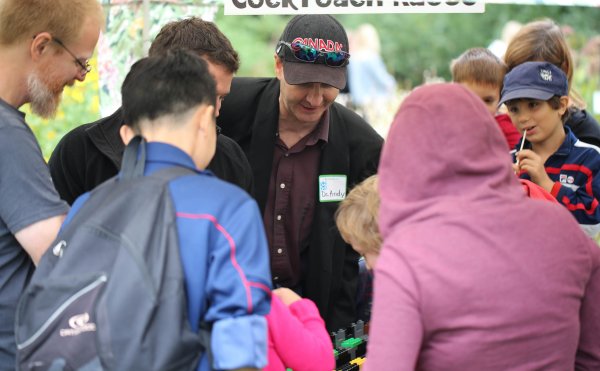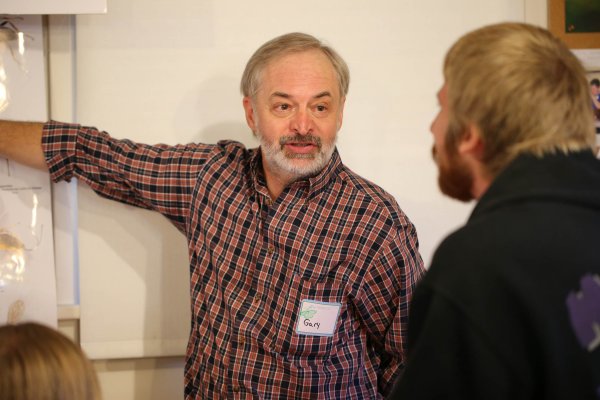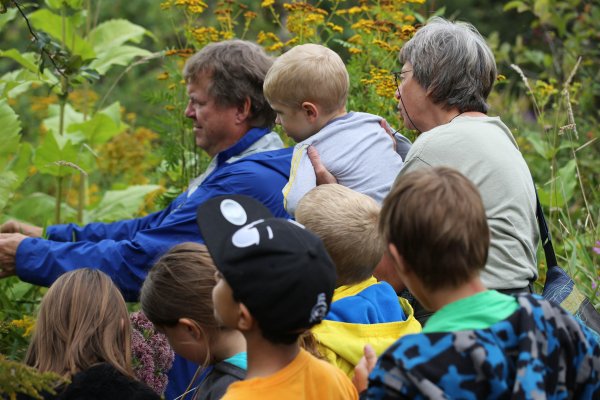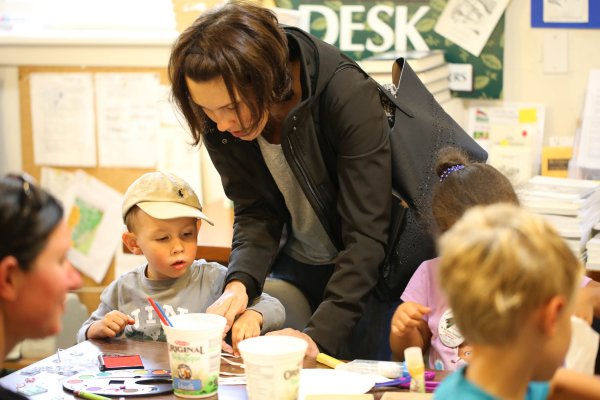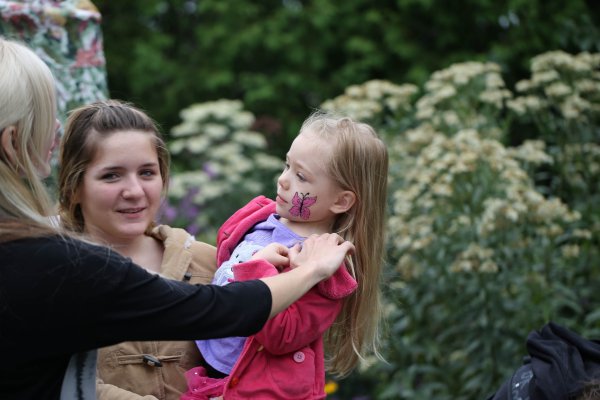Tagged: insects
Butterfly Hunting in the National Capital Region
By Richard Singhroy
Richard Singhroy is a 2nd-year environmental studies student at the University of Ottawa. This fall, he is volunteering with the OFNC through the Community Service Learning program.
On Tuesday, October 13, at the Central Experimental Farm’s K.W. Neatby Building, 960 Carling Avenue, Rick Cavasin gave an in-depth presentation on the butterflies and butterfly habitats of the Ottawa region. Rick is a butterfly enthusiast and an expert butterfly photographer whose images have appeared in many publications, including the new ROM Field Guide to Butterflies of Ontario. For those in attendance, this was a fantastic opportunity to learn about butterflies in our region.
The main part of Rick’s presentation comprised a depiction of the five families of butterflies found in the Ottawa region, as well as a description of the many different sites where butterflies can be found, such as Luskville Falls, Constance Bay, Mer Bleue, and Larose Forest, to just name a few.
Each species has its own habitat requirements that will dictate where it can be found. For example, the Bog Copper is specific to bog habitat, such as Alfred Bog and Mer Bleue, whereas the more generalist Northern Crescent can be found at a range of Ottawa sites. Some habitats, such as dense forests, are generally less favorable to most butterfly species. Forest edges and open meadow and grassland areas are great places to start your butterfly hunt.
This was also a great presentation for anyone who wants to start photographing butterflies, as Rick provided many useful tips. For example, he recommended turning off your flash, using a macro lens if possible, and not using a tripod (by the time your tripod is set up, the butterfly will usually have moved on). Rather than recommending a specific type of camera, Rick stressed that it is more important to know how to use your current camera properly. A fancy DSLR or a point-and-shoot can both take wonderful butterfly pictures. If you’d like to keep track of your findings and photographs, then check out the citizen science project e-Butterfly.
Rick also talked about how some butterflies in our region are in serious decline. One example is the Mottled Duskywing (photo above right). Most of its colonies have been built over, and the remaining sites are also at risk of development. If something is not done to stop the habitat destruction, then this butterfly will disappear from the Ottawa region.
This was an eye-opening presentation. I never knew that there are so many different types of butterflies in the Ottawa region. For more information on butterflies visit Rick’s personal web site, Butterflies of Ontario and the Ontario Butterfly Atlas online.
Second annual OFNC members’ photo night
By Claire Elliott and Barry Cottam
On Saturday evening, January 17, Barry Cottam and Hume Douglas hosted the second annual OFNC Member’s Photo Night. To accommodate the growing popularity of this event, the meeting was held at the Central Experimental Farm’s Neatby Building, the location of the OFNC monthly meetings.
Fourteen club photographers presented to a group of a couple of dozen onlookers. The emergent theme of the night seemed to be naturalists on vacation, as there were many wonderful photos from all over North America. However, the natural history of the Ottawa region was also well represented.
Starting in the south, Hugh Metcalfe introduced us to the many birds he encountered during his work as a bird surveyor in Florida and Mississippi. Suzanne Deschệnes also showed pictures from this region, all from 25 of Florida’s 27 National Wildlife Refuges. The first butterfly presentation of the night came from Gillian Marston, who visited Mission, Texas, for the Butterfly Festival held during fall butterfly migration. Heading east, Barry Cottam introduced us to the many wonderful insects of rural eastern Prince Edward Island.
Traveling west across the continent, our resident butterfly expert Rick Cavasin (see Butterflies of Ontario) took us on a second butterfly tour of Idaho, Colorado, Nevada, and Wyoming, while Gordon Belyea presented his lifer birds from a trip to Arizona and New Mexico. From Vancouver we saw beautiful western trees with Lorne Peterson. And in the north, Eden Bromfield combined scenes of the beauty of ice and snow with his interest in rare flora, and Claire Elliott exhibited an inventory of the flora and fauna of the Barrenlands in the Northwest Territories.
The photos taken in the Ottawa region showed the amazing diversity of our local natural history. The first presenter of the night, Dale Poulter, captured our attention with a wonderful display of caterpillar diversity, seen around her home in Perth. Victor Rakmil then presented a series of portraits entitled “Animals with Attitude.” Local flora were well represented by Brian Carson and his study on Trillium colour variants and by Josh McCullough’s artistic macro and landscape shots. Lastly, Diane Lepage, who was recently featured in a member profile, took us on a broad tour of our local fauna, focusing on insects she’d never seen before.
Thanks to Barry and Hume for organizing this event for a second year, to all of the photographers for sharing their beautiful photos, and to the audience for giving their support. We look forward to the 2016 photo night!
Member Profile – Diane Lepage
by Julia Cipriani
Members of the Ottawa Field-Naturalists’ Club are as diverse as the taxa they study: from birders to botanists, highschool students to university professors, backyard garden admirers to conservation officers. The OFNC blog features profiles of members to showcase the incredible array of natural history enthusiasts. Whether you’ve just joined or are a lifetime member, please contact ottawaofnc@gmail.com if you’d like to share your natural history story!
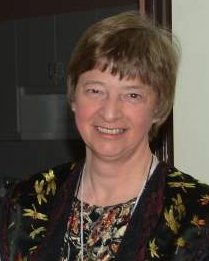 Many members know Diane as the champion for the Butterfly Meadow at Fletcher Wildlife Garden. Since 2002, she has worked with other very dedicated volunteers to create a beautiful wildflower habitat that supports a large number and variety of butterflies and other insects. For her efforts and commitment, she was recognized as the OFNC Member of the Year in 2008.
Many members know Diane as the champion for the Butterfly Meadow at Fletcher Wildlife Garden. Since 2002, she has worked with other very dedicated volunteers to create a beautiful wildflower habitat that supports a large number and variety of butterflies and other insects. For her efforts and commitment, she was recognized as the OFNC Member of the Year in 2008.
Diane’s interest in nature began very early. On summer weekends the kids piled into the car and their parents drove out into the countryside. They picked raspberries, strawberries, blackberries, apples, and walnuts. When Diane was a young child, her father and brothers carried her on their shoulders through Mer Bleue bog to pick blueberries. They spent hours exploring the open spaces around Carlsbad Springs, walking the railway tracks, and searching for winged creatures in the open spaces around the Ottawa Airport and at Mer Bleue.
Using a net her mother made for her out of a clothes hanger, a broom handle, and sheer curtains, Diane netted and preserved her finds. She was enthralled with the discovery of butterflies and more excited by the rarer coppers and Baltimores. Her father created spreading boards with a surface of thin soft pine boards with spaces between to accommodate the various body sizes. The middle was Styrofoam with plywood on the bottom. Diane displayed her specimens, which she researched in the Golden Guides purchased by her parents.
Diane’s brother remembers the time they were chasing a particularly elusive butterfly. He watched her pause to capture something in a pill container. When they finally stopped, Diane showed him her find – a tiny green spider. He is still amazed that Diane had spotted it while concentrating on a butterfly that was zipping around, many yards away. The lesson learned was that chasing insects develops awareness and a keen eye.
Diane remembers good times in Gatineau Park with her cousins, swimming and hunting for frogs, toads, and turtles. The family made regular trips to the Experimental Farm where their mother introduced the kids to garden flowers, one of her interests. They learned the names of trees by matching leaves with the names on the tags of the trees in the Arboretum. Diane is very grateful that her parents introduced their children to the beauty and wonder of the natural world.
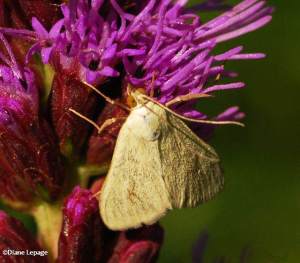
Carrot Seed moth (Sitochroa palealis), photographed by Diane on the vivid blazing star flower in the FWG’s Butterfly Meadow.
Diane had a wish list of insects she had read about and was determined to find. When asked what her fondest natural history moment was, she described a vivid memory of finding her first praying mantis when she was a teenager. Her passion for exploring the natural world and sharing her knowledge of it with others continued into her twenties. She bought every guide she could get her hands on and her first SLR camera in the late 1970s. In 2007 she bought her first digital camera. That purchase ended her collecting of insects; she caught them on film instead. She is a skilled nature photographer with an amazing capacity for spotting everything and anything. When she is out exploring, Diane always carries her camera and two or three lenses. Her photos have been published in book Papillons de Québec et maritimes by Louis Handfield and on the OFNC web site, and she’s a regular contributor to the FWG photo galleries.
When asked about her most memorable natural history moment, Diane describes the wonder of discovering her first walking stick, on the hub cap of a parked car near her workplace in Aylmer. For the next 15 years, she monitored the activity of walking sticks in that area.
Diane joined an entomology club and enjoyed sharing observations about rare or unusual specimens. She joined the Ottawa Field Naturalists’ Club in 1980. One of her fondest memories with the Club is her first trip to Pelee in the early 1980s. Another highlight was the publication of her five year study of moths of Larose Forest and receiving the OFNC’s Anne Hanes Natural History Award in 2012. Her article, Moths of the Larose Forest, appears in the January to March 2013 Trail and Landscape (volume 74, number 1).
When asked what she is most passionate about now, she immediately replied, “All things related to the life cycle, habitats and environment of the Lepidoptera family.” Given the opportunity, she would be a butterfly, flying, alighting and nectaring on flowers. Her favourite bird is the owl – quiet, beautiful and hard to spot. Her favourite international spots to observe natural history are Costa Rica and Arizona. Locally her favourite is the Larose Forest.
Diane is most generous with her commitment, her time, and her knowledge of natural history. Like her parents.
Insect Workshop at FWG Interpretive Centre
The first Sunday of November, I had the pleasure of attending an insect workshop at the Fletcher Wildlife Interpretive Centre hosted by no other than the President of the OFNC, Fenja Brodo. Each participant had access to a microscope, an array of insect specimen samples, as well as the opportunity to ask questions that our experienced demonstrator answered.
Fenja provided everyone with an Orders of Winged Insects in Algonquin Park dichotomous key as well as a handout outlining the characteristics of each order of insect*. With these tools, we were able to independently identify the specimens, and when stumped receive a little help! It was quite a learning experience. The knowledge and resources gained from this outing can be applied to career and hobby alike.


Insects have a particular anatomy – all insects can be separated into three distinct sections: the head, consisting of the eyes and antennae; the thorax, consisting of the legs (three on each side) and wings; and the abdomen.
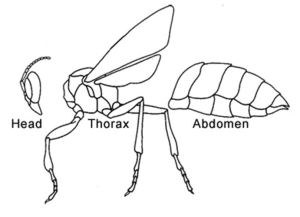
Basic insect anatomy (Google)
Diptera: This order consists of mainly flies, with one pair of wings and one pair of halters for balance. There is no long tail at the tip of the abdomen, and the antennae are very short.
I identified two insects in the Diptera order – Nephrotoma ferryginea and Hybomitra aquatincta. N. ferryginea (the reddish, middle specimen in image below – click image to zoom), had two wings and two noticeable halters, along with very long legs. The abdomen was larger than the thorax and head combined. I remember thinking that there had to be a weight imbalance, but then noticed the way that the wings and legs seem to fall in the direction of the abdomen. For the second Diptera specimen, H. aquatincta (image below, specimen on right), I had to take a second glance. I thought, at first, that I was looking at a honeybee. It was much larger than the N. ferryginea fly, had slightly shorter antennae, and was covered in hairs!
Hemiptera: This order consists of the true bugs, insects with two pairs of wings, the hind wings being membranous but the forewings with a membranous apex and thickened, slightly stiffer basal area. When at rest, the membranous tips of the wings overlap. These insects have either none or two ocelli (tiny eyes that are sensitive to light and darkness, located behind the larger eyes, that are sensitive to movement).
I identified one specimen within this order. In the image above (specimen on left), the front part of each forewing has more veins, and appears stiffer, while the other half and the hind wings are more membranous. This is where the order name originates – in Greek hemi or half and pteron or wing. The Hemiptera specimen also had a red stinger! Unfortunately, the genus and species is unknown.
Coleoptera: This is the order of Beetles. Their forewings are hard and meet in a straight line down the middle. The hind wings are membranous and located underneath the forewings. Hind wings are for flying, but some species have lost these wings and can no longer fly.
I identified two specimens in this order: Chryochus auratus, and the second specimen’s Genus and species was unknown. The first was small, and had colourful, metallic- looking forewings (image to left, specimen on right). It was hard to distinguish between the thorax and the abdomen of this insect. Fenja mentioned that this insect eats leaves throughout its entire life – larva to adulthood! The second specimen was much larger, black/brown in colour, and had legs covered in hairs that resembled rose thorns under the microscope (image to left, specimen on left). I questioned whether or not they were used for any form of defense, but learned that the hairs were simply proportional to the size of the larger insect.
Blattodea: This order consists of cockroaches. These insects have two pairs of wings, uniform in texture and folded over the body. The hind legs are similar to the middle legs, and they have long antennae.
This was the final order for which I identified a sample (image to right). The Genus and species is unknown, but it belonged to the family Blattidae, which is native to the area. This cockroach was copper in colour, but had many other beige and brown markings on the back. The parchment- like wings covered the entirety of the thorax and abdomen, and the legs were also covered in hairs.
Did you know this order was once part of the Orthoptera order that consists of crickets and grasshoppers? This truly demonstrates the evolving nature of taxonomy!
This event was an amazing learning experience! On top of this, I met other individuals with like interests and I was also able to share my own knowledge on the topic and assist them with microscope set-up and identification. It gave real purpose to my personal studies!
*Fenja used Bugguide.net as a resource for the handout. Check out Bugguide.net here: http://bugguide.net/node/view/15740
A visit to the Canadian National Collection of Insects, Arachnids and Nematodes
By Barry Cottam
On Saturday afternoon, February 15, about two dozen of us gathered in the foyer of the Agriculture and Agri-Food Canada’s Neatby Building in eager anticipation of a tour of the Canadian National Collection (CNC) of Insects, Arachnids and Nematodes.
The CNC is one of the largest insect collections in the world, with 17 million pinned specimens stashed away in cases piled high in special cabinets. The collection is so heavy it has been moved into the oldest and sturdiest part of the building.
Three of the 16 entomologists currently on staff, Drs Owen Lonsdale, Hume Douglas and Jeff Skevington, were on hand to divide us up into groups. I was in Owen’s group and our path barely crossed those of the other two.
Owen is the manager of the CNC and a keen, enthusiastic researcher exploring the minute worlds of Dipteran families most of us rarely see. He started us off in the molecular lab, explaining that entomologists are relying increasingly on molecular and DNA studies for species identification and evolutionary reconstruction. Sometimes physical differences between species can be very small but the behavioural differences very large: two insects that appear identical could be polar opposites, one being beneficial (a pollinator or an insect that feeds on pest species) the other being a pest or parasitoid of beneficial species. Millions of dollars worth of agricultural production can ride on getting the species identified correctly.
From the lab we went straight into the labyrinthine collection, starting with some of the largest and most beautiful of the Lepidoptera. Owen noted that while butterflies get most of the attention, moths form by far the largest number of species. In fact, butterflies are actually diurnal moths, a rather surprising description for we amateur entomologists.
We surveyed a wide range of other insects, from Odonata – no one on staff is currently working with them, unfortunately – to various genera of Diptera, including robber, horse and flower flies, the latter being an interesting follow-up on Flower flies!, Andrew Young’s presentation on the Syrphids.
One person in our group was a very keen lad, too young to join the Macoun Club but allowed in anyway – he’s that enthusiastic. Full of questions and eager to see everything, he pretty much glued himself to Owen so as not to miss a thing. I understood his passion and was happy to see him enjoying this opportunity, not available in my day.
We stopped in at Owen’s lab, where his microscopic work includes sketches of the genitalia of the Diptera he is identifying. Each sketch can take up to 8 hours to make and, by my calculation, if he does nothing else and collects no other species, he will finish his drawings on one project in particular in about 2 years. His art background, he explained, enables him to combine two often conflicting areas of interest, the arts and sciences.
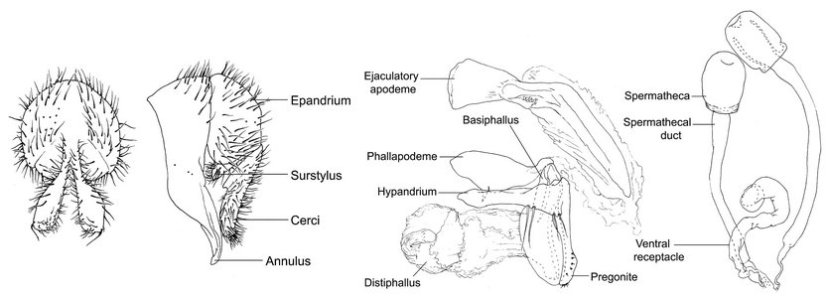
One of Owen Lonsdale’s illustrations: male (left, centre) and female (right) genitalia of Hendelia beckeri Czerny
Owen explained how the collection is organized, from the accurate labeling of every item and the conventions around creating scientific names to the importance of holotypes, the insects first described for a species that become the standard for identifying others in the same species. He also outlined how the CNC can be used to study diversity, the evolution of species and their taxonomic relationships, species biogeography and radiations, insects as vectors of disease, the impacts of habitat loss and climate change.
The CNC’s primary mandate is to support agriculture, protect Canadian bioresources, investigate problems such as pests, detection and control invasive insect species, and protect agricultural production. Those tiny insects we generally never see cause billions of dollars in damage to food stocks and forest resources the world over. The Emerald Ash Borer is but a recent example, which likely entered North America accidentally as larvae in wooden packing materials from east Asia.
For this retired historian, Owen’s comments on the literature were as interesting as the collection itself. He pointed out several of the manuals on various orders published by the CNC and in use around the world. These include the three-volume Manual of Nearctic Diptera, published between 1981 and 1989, and now available online through the website of the Entomological Society of Canada.
The CNC has shelves full of boxes containing published articles from around the world that are not yet available online, a huge and growing literature that still only scratches the surface of the entomological world. Some 1.5 million species have been described, but estimates of total species range from 10 to 30 million.
The collection of insects in the Canadian Arctic during the Cold War was a particularly interesting story: soldiers and others stationed on the Dew Line sought help from the CNC for dealing with the black flies and other biting critters driving them mad. The result was the Northern Insect Survey, with a small army of 49 entomologists collecting not only the offending beasties but anything else they could find – all still tucked away in the CNC.
All in all, this was a fascinating afternoon that went by too quickly. These tours are offered from time to time, so keep checking the OFNC events info. I for one plan to come back!
If you want to know a whole lot more about the history of the CNC, check out Owen’s item in the Newsletter of the Biological Survey of Canada.
Flower flies!
Written on the fly by Lynn Ovenden
The OFNC monthly meeting on Tuesday (February 11) last week was a big one, actually a joint meeting with the Ottawa Entomology Club. There were well over 100 of us in the salons of the Neatby Building (our new meeting location) buzzing with news and renewed acquaintances.
Murray Citron opened the program with his poem inspired by a mating pair of Dragonflies. We listened rapt in silence to his ode and the sober addendum.
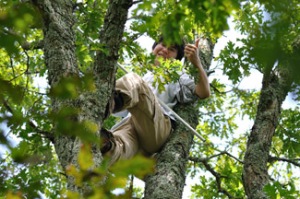
Andrew Young, hard at work on his study of Syrphids, photo courtesy of the Canadian Collection of Insects, Arachnids, and Nematodes
Then Jeff Skevington introduced our speaker, Andrew Young, whose recent MSc thesis at Guelph was a systematic revision of a large genus of flower flies (Diptera: Syrphidae), Platycheirus.
Flower flies (aka hover flies or syrphids) are one of the largest families of true flies (Diptera), with over 6,000 named species. Some naturalists are familiar with them; the adults are beautiful and visible as they hover or feed on flower nectar and pollen. They are important wild pollinators and many are remarkable mimics of stinging Hymenoptera (bees, wasps, and ants).
But like the mating dragonflies, they have a darker side: many of the larvae are parasitoids and predators, so various and devious in their adaptations and food sources, they defy imagination. Definitely worth looking for in the field.
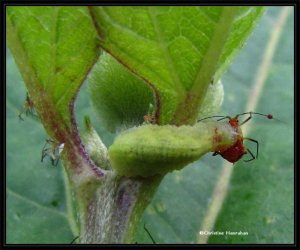
The larvae of some species of hover flies are known predators on aphids. As you can see here, this larva is munching away on the aphid! photo and caption by Christine Hanrahan
Andrew shared his fascination with the larval feeding strategies of perhaps a dozen species and each seemed more other-worldly than the last. Many are useful biocontrol agents, as predatory species often feed on aphids.
After his talk, Andrew encouraged us to join him at the front to look at a new online photographic key to the North American genera of flower flies.
Andrew is now a student at Carleton University working on a PhD in the Canadian National Collection of Insects, Arachnids, and Nematodes (also housed in the Neatby building!) – another systematic study of flower flies, this time, all species of Australia, with Jeff Skevington supervising. Sounds like fun.
In case you missed it: 1st Annual Bug Day
By Jeff Skevington, foreword by Natalie Sopinka
Whether it’s beetles, butterflies or bees, “bugs” are in the news. Invasive southern pine beetles are wreaking havoc on New Jersey’s pine trees, as the world warms butterflies are emerging earlier, and a parasitic fly may be changing honey bees into “zombees.”
In local news, on September 7 this year, the Entomological Society of Ontario (ESO) hosted Ottawa’s first Bug Day. It was funded by a public encouragement grant from the Entomological Society of Canada and sponsored by the Ottawa Field-Naturalists’ Club, who hosted the event at the Fletcher Wildlife Garden.
You can listen to highlights of the event on CBC Radio. OFNC’s chair of Excursions and Lectures, Jeff Skevington, summarizes the day below:
“Today was the first ESO/OFNC Bug Day. Thanks to Sophie Cardinal for organizing it all and to our many members and other volunteers who came out to help. I think it was an unparalleled success. We had hundreds of participants (my guess is slightly over 1000, but it was hard to track numbers).
“All of the volunteer leaders came with fabulous stuff – everything from Giant Swallowtails and Tomato Hornworm larvae to huge scarab larvae to hissing cockroaches and a whip scorpion.
“Andy Bennett did a brilliant job with the cockroach races with his home made Duplo race track. We had a tank of aquatic insects, ran at least 15 public hikes, had a biological control display, face painting, a butterfly exhibit, a craft table. The building was bursting at the seams to thankfully the rain held off and we were able to do a lot of it outdoors.
“All in all, it was fabulous exposure for the ESO and the Ottawa Field-Naturalists’ Club. Thanks in particular to the Fletcher Wildlife Garden (FWG) group who allowed us to use (and slightly trample) their fabulous gardens. Hopefully we can do it again next year.”

